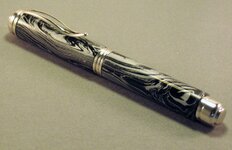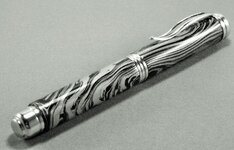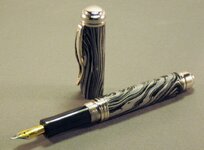Dalecamino
Local Chapter Leader
It is a challenge for me to, get the body to match components with the pen bodies. When I THINK I know when to stop turning and, start sanding it, sometimes turns out, I was wrong. Different materials , have different results. Therefore, they're never the same. This one is, a M3 Lava blank. It requires sanding then, polishing with the two compounds used for metal. So, I got it pretty close but, over sanded at the finial and, under sanded at the center band. Since the components were each made separately, they are not uniform either. Further complicating the process of, getting a good fit. So, I need more PRACTICE. Thanks for looking!



